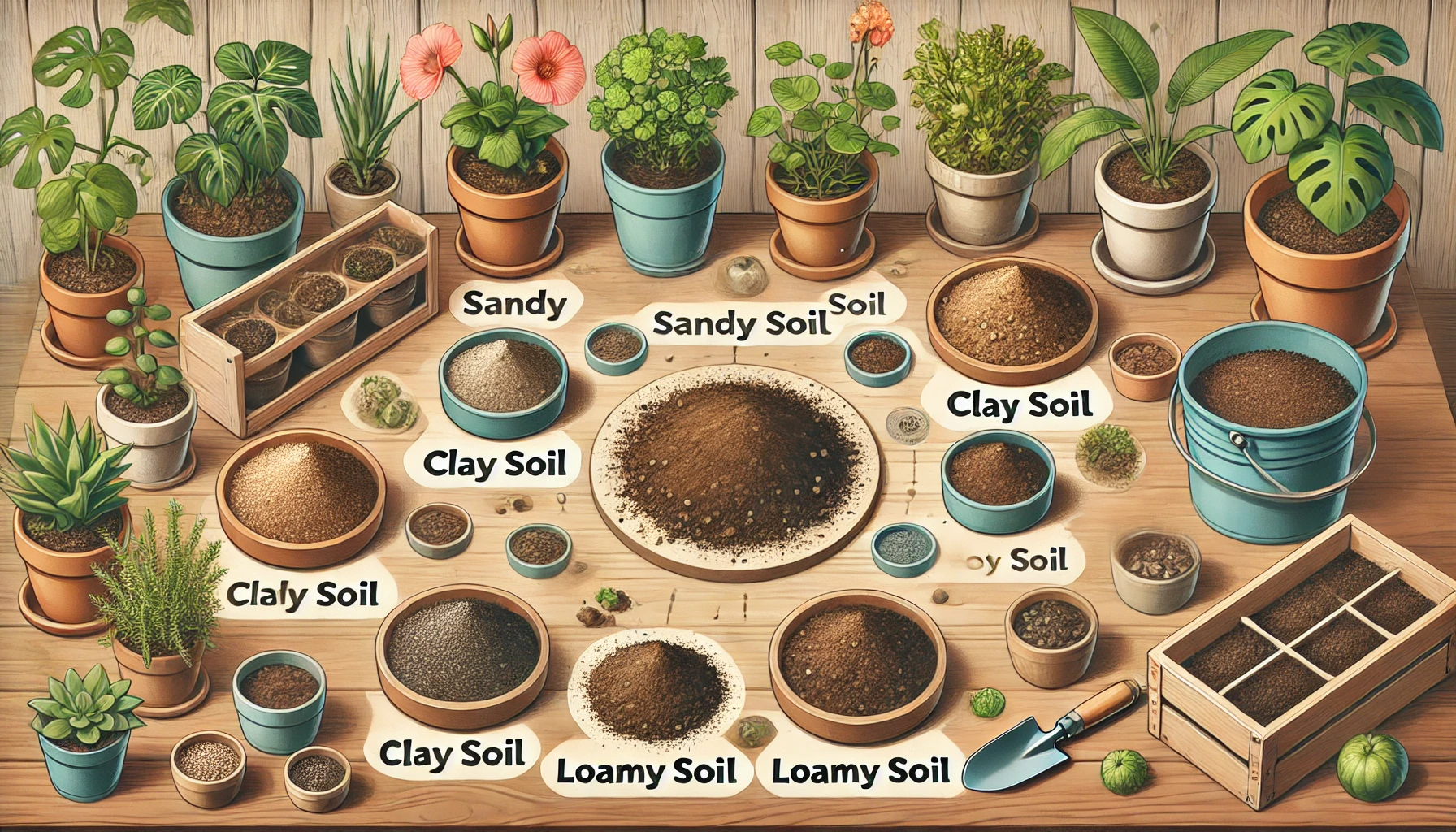The type of soil you use is one of the most crucial factors for healthy plant growth. Different plants have specific needs, and the wrong soil can hinder root development, water retention, and nutrient availability. In this article, we’ll explore how to choose the right soil for your plants and tips for creating the ideal growing environment.
Why Is Soil Important for Plants?
Soil serves as the foundation for plants, providing them with essential nutrients, water, and a stable base for their roots. The right soil supports healthy growth, while poor-quality or unsuitable soil can lead to stunted growth, root rot, or nutrient deficiencies.
Types of Soil and Their Uses
1. Potting Soil
Potting soil is specifically formulated for potted plants. It is lightweight, well-draining, and often enriched with nutrients to support plant growth. It’s ideal for indoor plants, container gardening, and small herb gardens.
2. Garden Soil
Garden soil is a heavier mix designed for outdoor use. It’s suitable for planting directly in the ground but may require amendments like compost or sand to improve drainage and nutrient content.
3. Sandy Soil
Sandy soil has large particles, which allow for excellent drainage but poor water retention. It’s ideal for plants like succulents, cacti, and other drought-tolerant species.
4. Clay Soil
Clay soil has small, dense particles that retain water and nutrients well but can become compacted, leading to poor root growth. Adding organic matter can improve its texture and drainage.
5. Loamy Soil
Loamy soil is considered the gold standard for most plants. It’s a balanced mix of sand, silt, and clay, offering excellent drainage, nutrient retention, and aeration.
6. Peat-Based Soil
Peat soil retains moisture well and is slightly acidic, making it a good choice for acid-loving plants like azaleas and blueberries. However, peat is not a renewable resource, so consider alternatives like coconut coir.
7. Orchid Mix and Specialized Soils
Certain plants, like orchids and bonsais, require specialized soils. Orchid mix, for example, contains bark, perlite, and charcoal to provide the aeration orchids need. Always research your plant’s specific requirements.
Factors to Consider When Choosing Soil
Drainage
Plants like succulents and cacti need soil that drains quickly, while others, like ferns, prefer soil that retains moisture. Check the plant’s water requirements and select a soil mix that matches those needs.
Nutrient Content
Ensure the soil provides the necessary nutrients for your plant’s growth. Some plants, like vegetables and flowering plants, benefit from nutrient-rich soil, while others, like succulents, prefer leaner mixes.
pH Level
Most plants thrive in neutral to slightly acidic soil (pH 6-7). Acid-loving plants, like azaleas, require more acidic soil, while some vegetables and herbs prefer alkaline conditions. You can test your soil’s pH using a home testing kit.
Aeration
Roots need oxygen to grow and absorb nutrients. Soil with good aeration ensures that roots can breathe. Add materials like perlite or vermiculite to improve aeration in compacted soil.
How to Improve Soil for Your Plants
1. Add Organic Matter
Compost, well-rotted manure, and leaf mold are excellent additions to enrich soil and improve its structure. Organic matter provides nutrients and encourages beneficial microbial activity.
2. Mix in Sand or Perlite
For plants that require well-draining soil, like succulents, add sand or perlite to your soil mix. This helps water flow freely and prevents root rot.
3. Use Mulch
Adding a layer of mulch on top of the soil helps retain moisture, regulate temperature, and reduce weed growth. Organic mulches like wood chips or straw also break down over time, enriching the soil.
4. Test and Adjust Soil pH
If your soil’s pH is too high or low, use additives like lime to increase alkalinity or sulfur to increase acidity. Follow the instructions carefully to avoid overcorrecting.
Common Mistakes to Avoid
- Using Garden Soil Indoors: Garden soil is too heavy and compact for indoor plants, leading to poor drainage and root issues. Always use potting soil for potted plants.
- Ignoring Plant Needs: Not all plants thrive in the same soil. Research your plant’s specific requirements to ensure they get the right environment.
- Reusing Old Soil Without Refreshing: Old soil may lose nutrients and harbor pests or diseases. If reusing soil, sterilize it and mix in fresh compost or amendments.
Creating Custom Soil Mixes
For advanced gardeners, creating custom soil mixes tailored to your plants can lead to even better results. Combine different soil types and additives based on the plant’s needs. For example, a cactus mix might include sand, perlite, and a small amount of potting soil.
Choosing the right soil for your plants is the first step toward a thriving garden. By understanding your plant’s needs and making informed choices, you’ll set them up for success and enjoy a lush, healthy collection of greenery.
